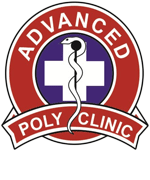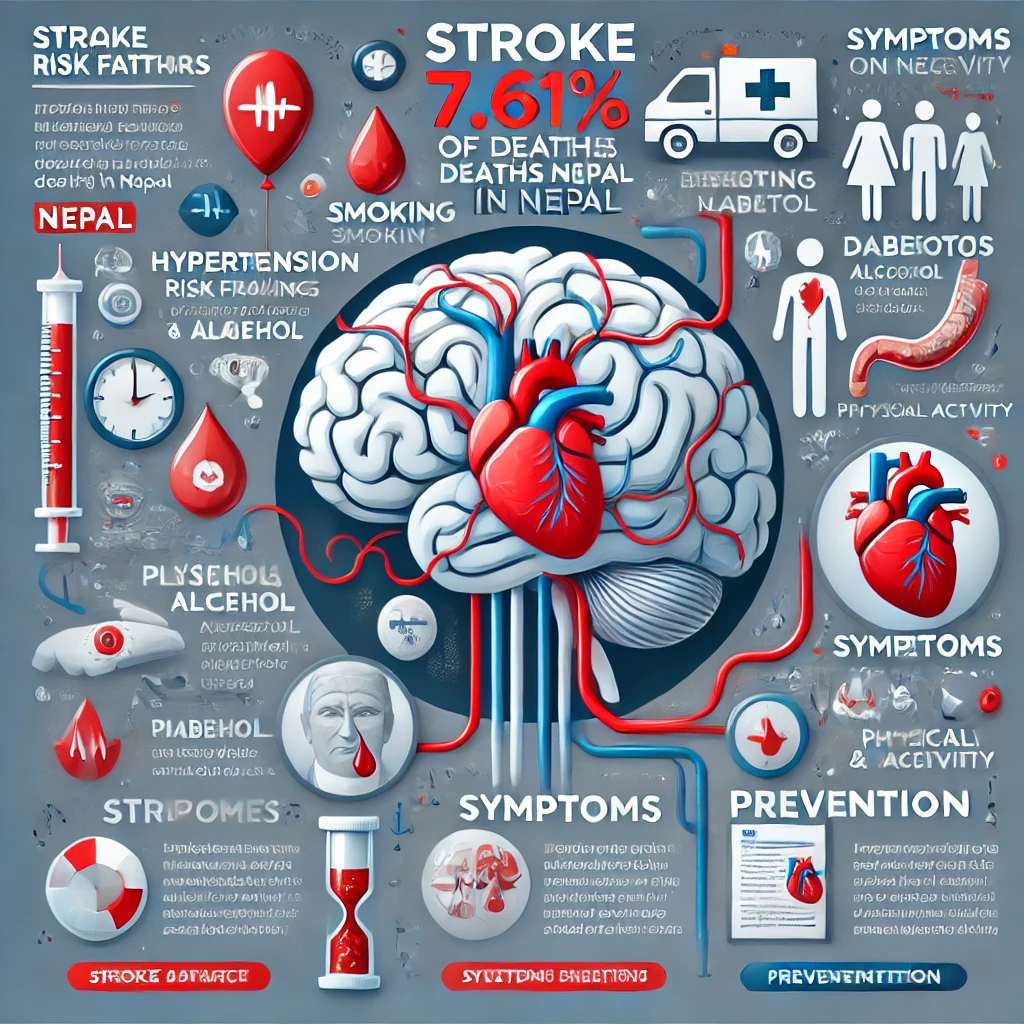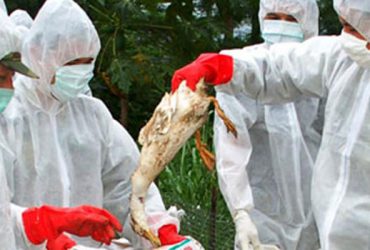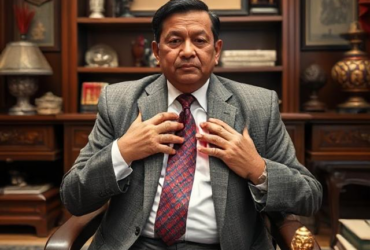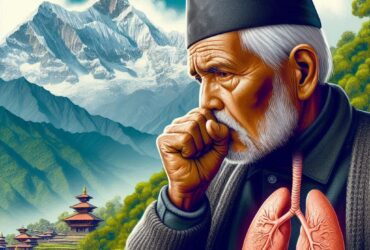Stroke is one of the leading causes of death and long-term disability worldwide, and Nepal is no exception. It is crucial to understand the impact of stroke, its risk factors, and how to prevent it. In this article, we’ll explore everything you need to know about stroke in Nepal, including its prevalence, causes, symptoms, and prevention methods.
What is Stroke?
A stroke occurs when there is a sudden interruption in the blood supply to the brain, which can result in brain cells being damaged or dying. This interruption can be caused by a blocked or ruptured blood vessel in the brain. Depending on the location and severity, a stroke can lead to permanent brain damage, disability, or even death.
Types of Stroke
There are two primary types of strokes:
- Ischemic Stroke: This is the most common type of stroke, occurring when a blood clot blocks or narrows an artery leading to the brain.
- Hemorrhagic Stroke: This occurs when a blood vessel in the brain ruptures, causing bleeding within the brain tissue.
Both types of stroke can have severe consequences, and immediate medical attention is necessary to minimize brain damage.
Stroke in Nepal – A Growing Concern
Stroke is a significant health issue in Nepal. Recent studies indicate that stroke accounts for around 7.61% of all deaths in the country. It is also a major cause of disability, with many survivors facing long-term complications. The increasing prevalence of stroke is linked to a rise in risk factors such as hypertension, diabetes, smoking, and unhealthy lifestyles.
Stroke Statistics in Nepal
- Prevalence: Stroke is a leading cause of death and disability in Nepal. The burden of stroke is especially high in older adults, with the average age of stroke patients being between 59 and 62 years.
- Types of Stroke: Hemorrhagic stroke is the most common type, responsible for a large number of stroke-related deaths in Nepal.
- Risk Factors: Hypertension, diabetes, smoking, and alcohol consumption are the main risk factors for stroke in Nepal. A significant portion of stroke patients are found to have uncontrolled hypertension or diabetes.
Common Symptoms of Stroke
Recognizing the symptoms of a stroke quickly can save lives. The key signs and symptoms to watch out for include:
- Sudden numbness or weakness in the face, arm, or leg, particularly on one side of the body.
- Confusion or difficulty speaking or understanding speech.
- Trouble seeing in one or both eyes.
- Severe headache with no known cause.
- Difficulty walking, dizziness, or loss of balance.
If you or someone around you shows any of these symptoms, seek medical help immediately.
Causes and Risk Factors
Understanding the risk factors that contribute to stroke can help prevent its occurrence. Some of the common risk factors for stroke in Nepal include:
- Hypertension (High Blood Pressure): Uncontrolled hypertension is the leading risk factor for stroke.
- Smoking: Smoking contributes to the buildup of plaque in arteries and increases the risk of clot formation.
- Diabetes: High blood sugar levels can damage blood vessels and increase the risk of stroke.
- Excessive Alcohol Consumption: Drinking too much alcohol can lead to high blood pressure and increase the risk of stroke.
- Physical Inactivity: A sedentary lifestyle is a major contributor to stroke risk.
Prevention – How to Reduce the Risk of Stroke
While not all strokes can be prevented, there are several lifestyle changes and medical interventions that can significantly reduce the risk of stroke. Here are some key prevention strategies:
- Manage Hypertension: Regularly check your blood pressure and follow your doctor’s advice to keep it under control.
- Maintain a Healthy Diet: Eat a balanced diet rich in fruits, vegetables, whole grains, and lean proteins. Reduce salt, sugar, and unhealthy fats.
- Exercise Regularly: Engaging in physical activity can help lower blood pressure, control weight, and improve overall cardiovascular health.
- Quit Smoking: Smoking cessation significantly reduces the risk of stroke and other heart-related diseases.
- Limit Alcohol Consumption: Drink alcohol in moderation, if at all.
Treatment and Rehabilitation
If a stroke occurs, prompt treatment is essential to minimize brain damage. Depending on the type of stroke, treatments may include medications to dissolve clots or surgery to repair damaged blood vessels. After the initial treatment, rehabilitation is often necessary to help stroke survivors regain lost functions and improve their quality of life.
Stroke Care in Nepal
In Nepal, several initiatives are being launched to address the growing stroke burden:
- Stroke Awareness Campaigns: Public awareness efforts focus on educating people about stroke symptoms, risk factors, and the importance of seeking immediate medical attention.
- Improved Medical Facilities: Efforts are underway to improve stroke care in hospitals, with a focus on faster diagnosis and better treatment options.
Conclusion
Stroke is a major health concern in Nepal, and its impact on the population is growing. However, by understanding the risk factors, recognizing the symptoms, and adopting healthy lifestyles, many strokes can be prevented. It’s essential to raise awareness, promote regular health check-ups, and ensure that timely medical treatment is available for those who suffer from a stroke.
Stay informed, stay healthy, and take action to reduce your risk of stroke.
📞 01-4531078 or 01-4543386
